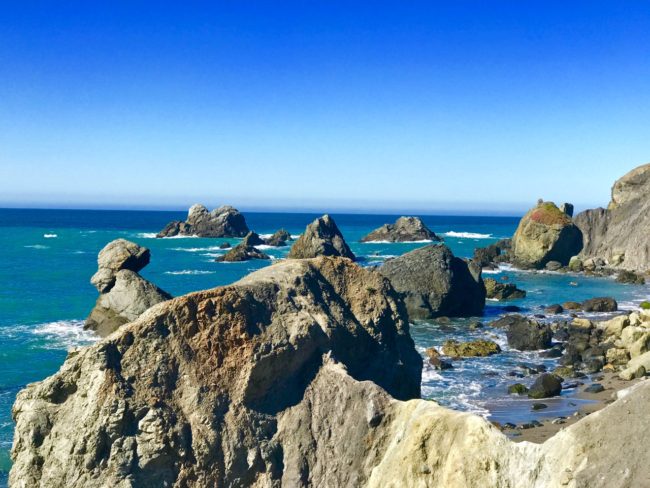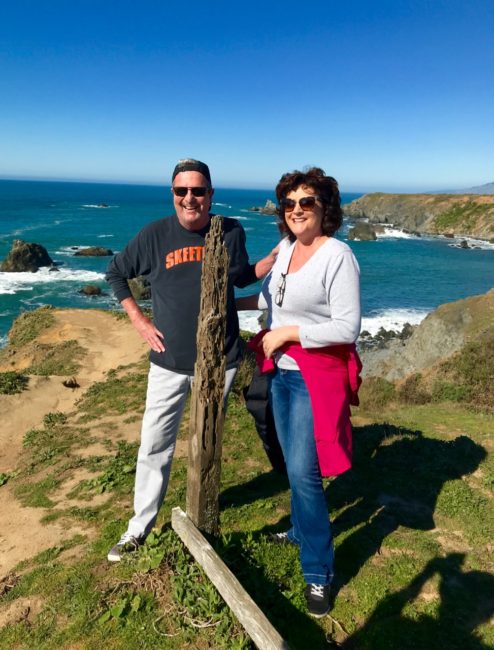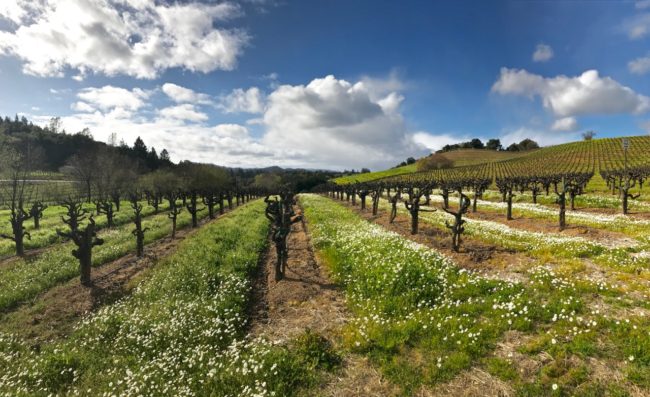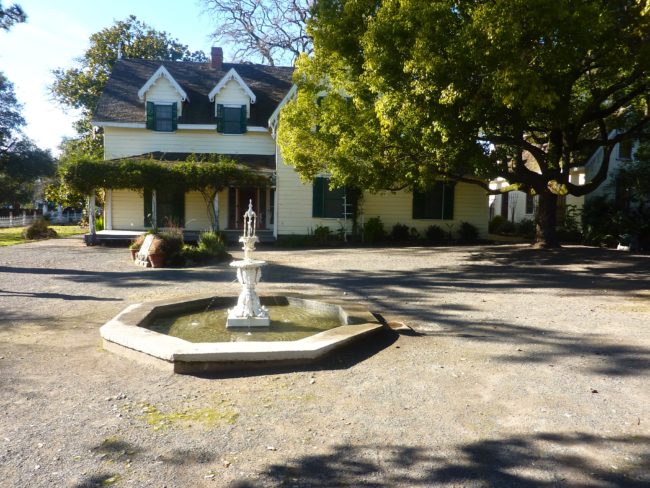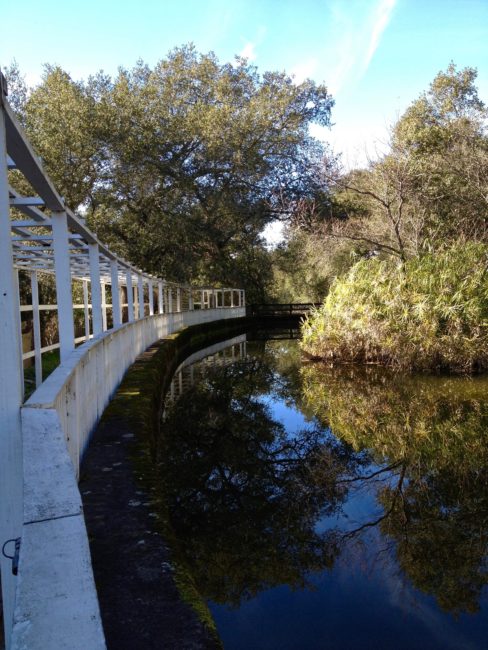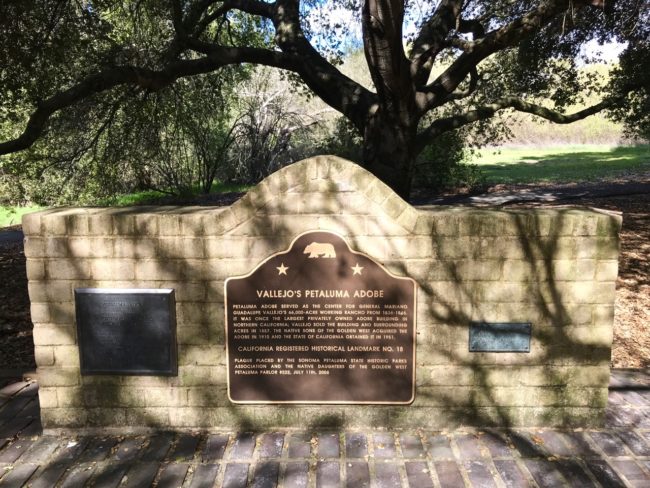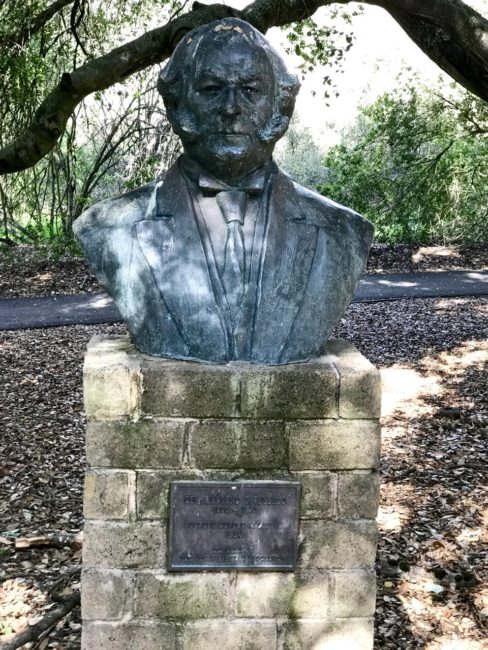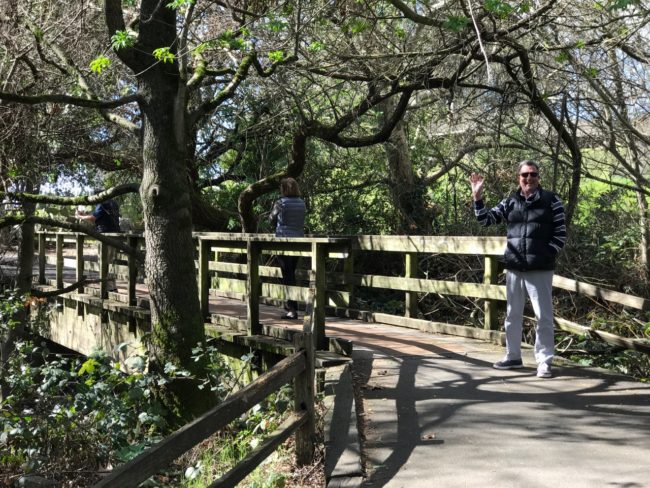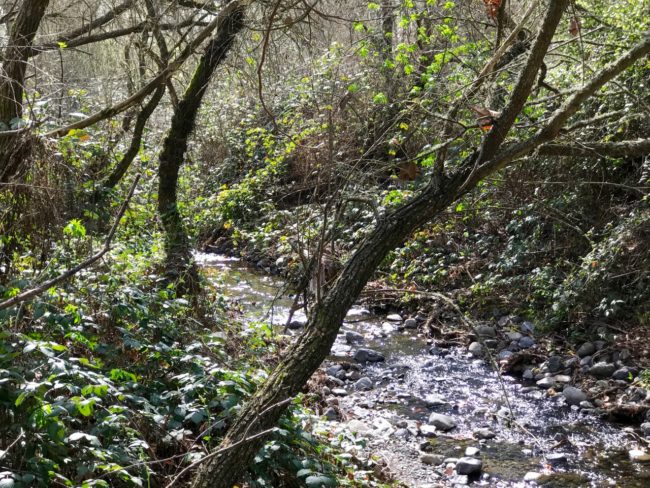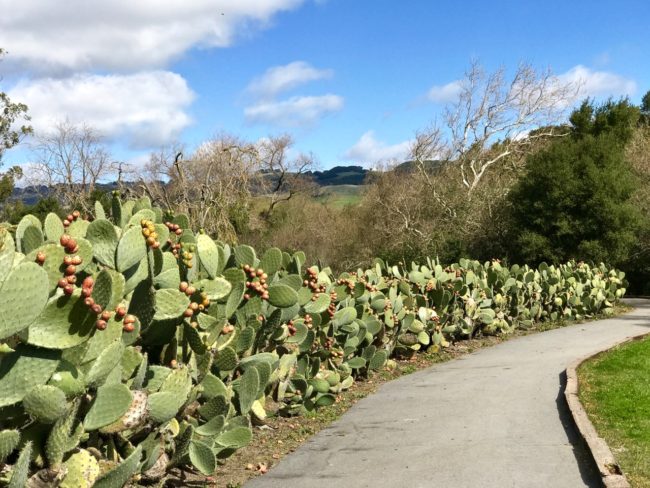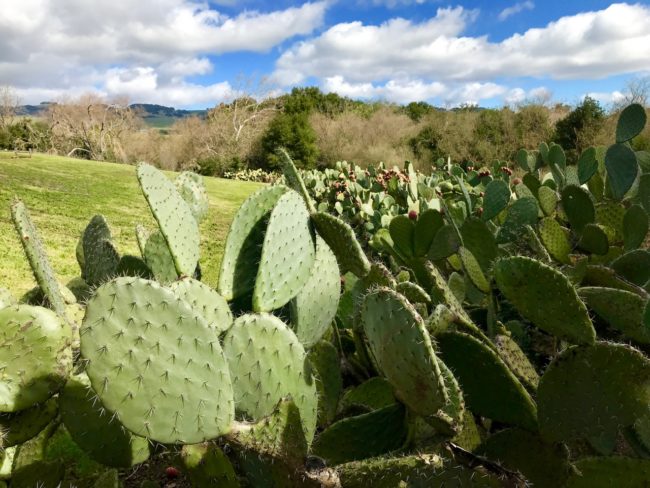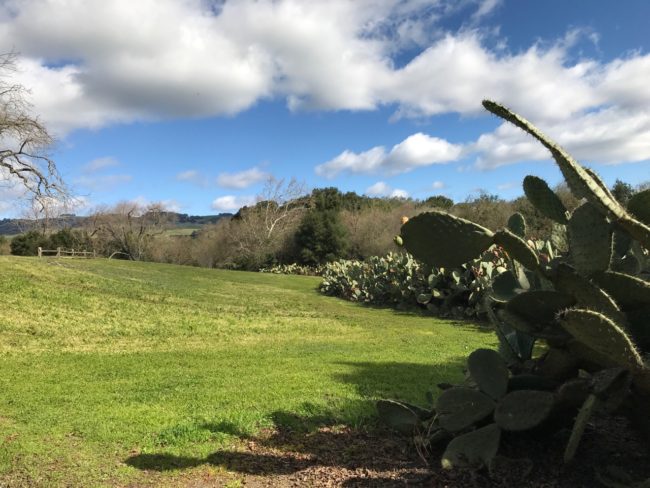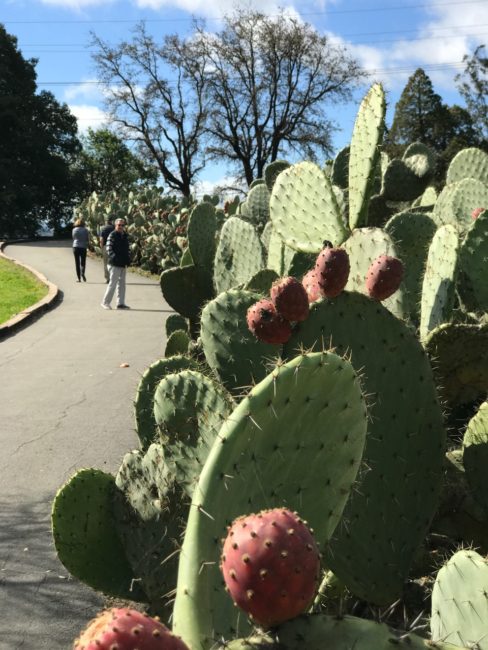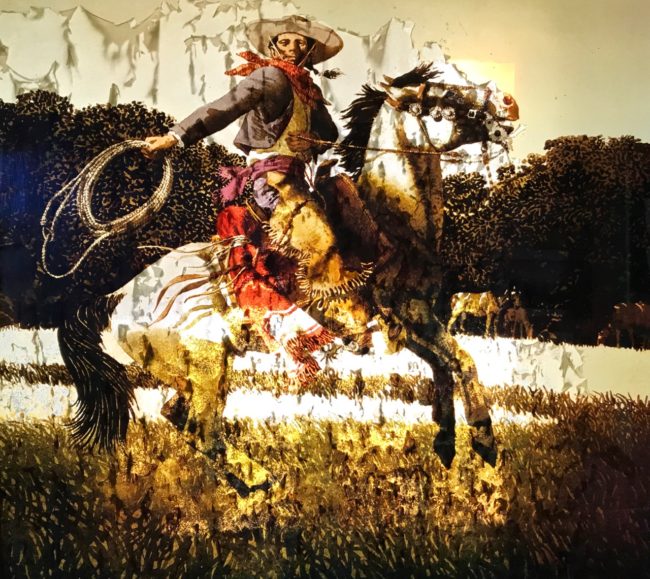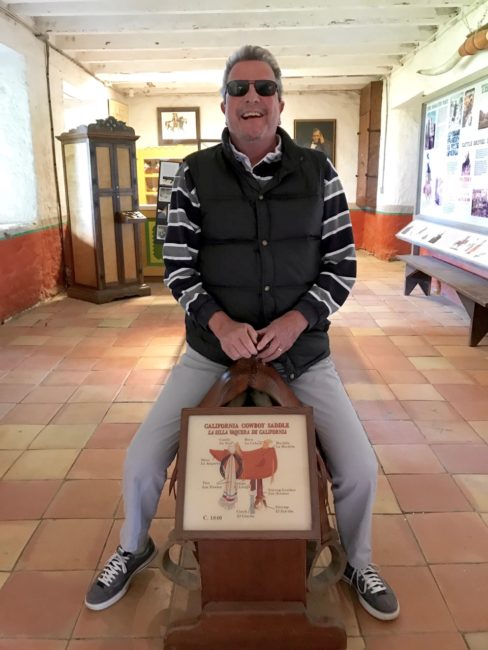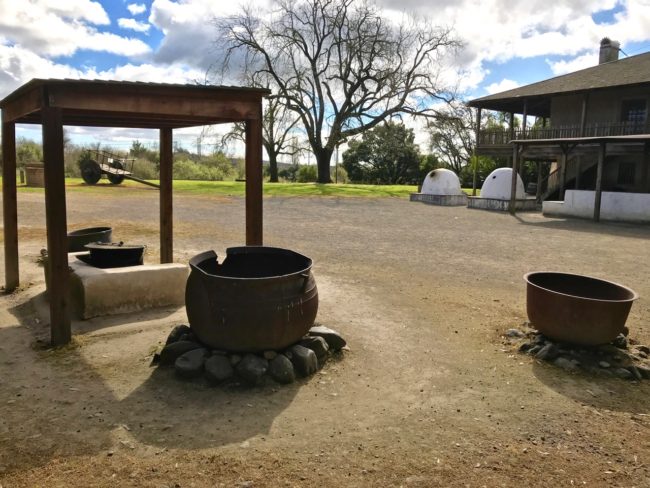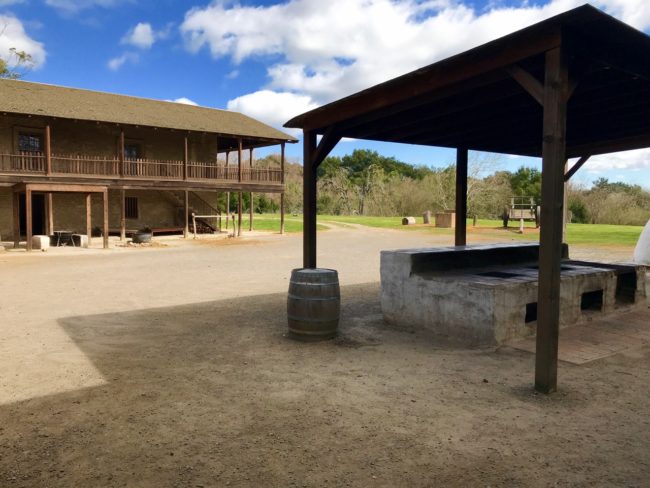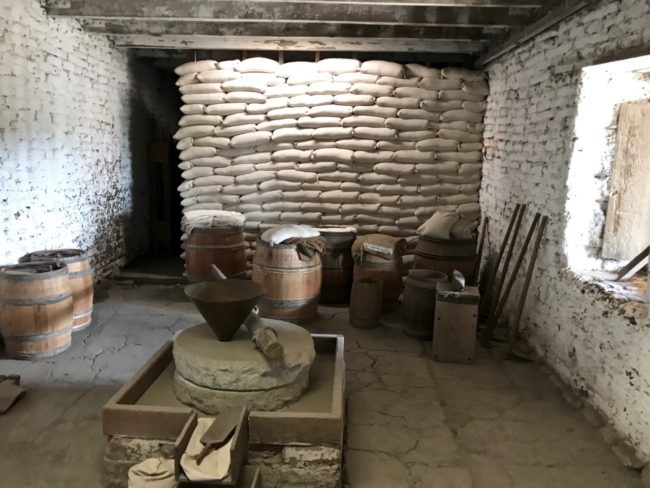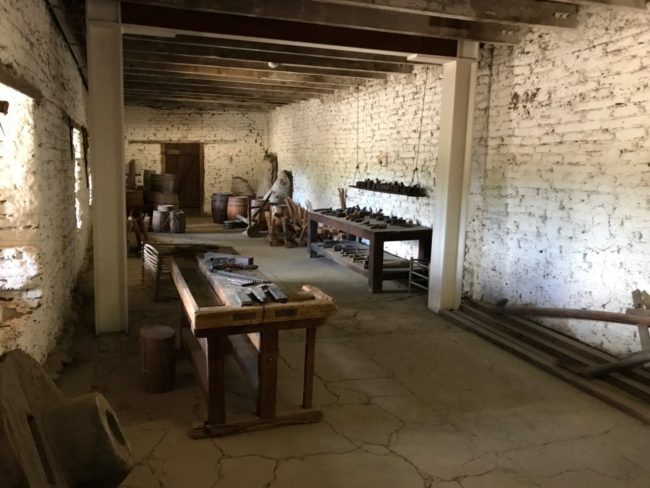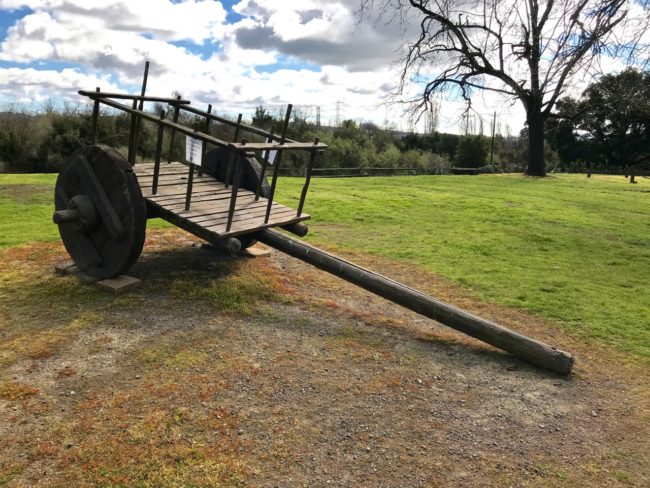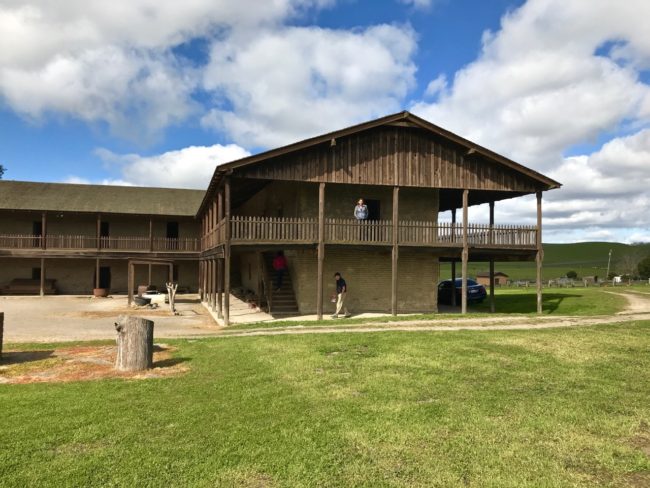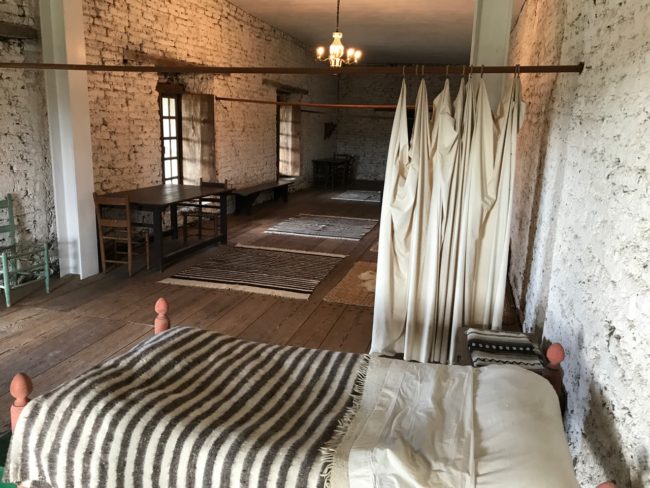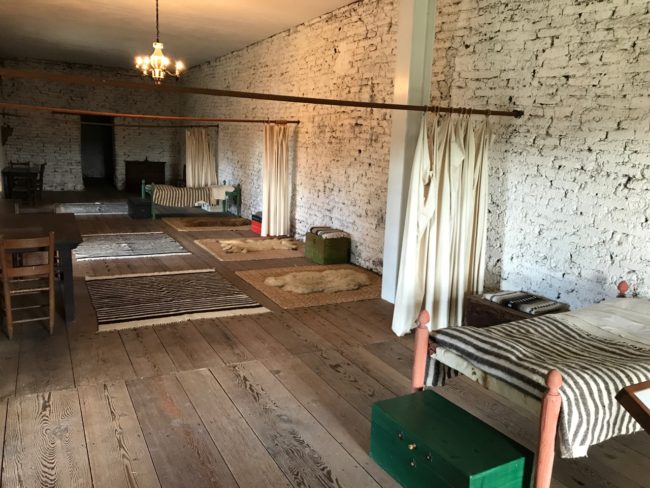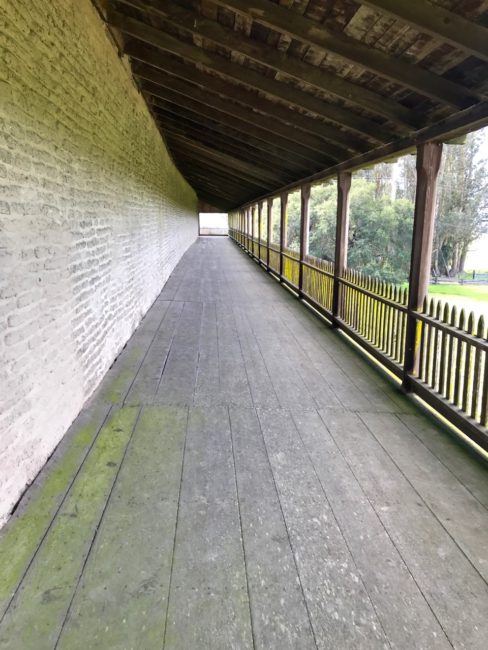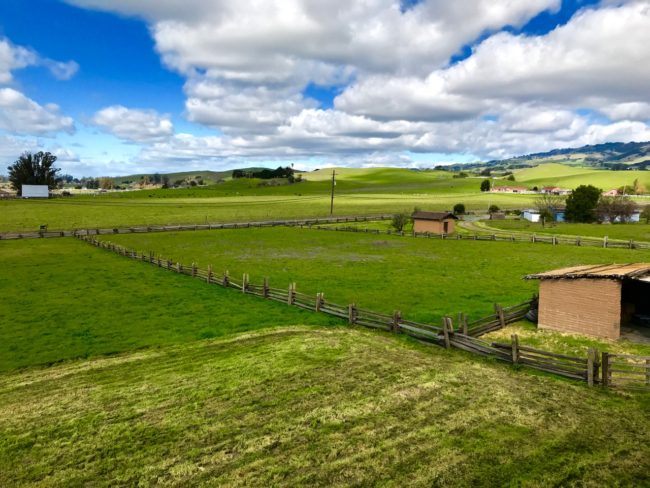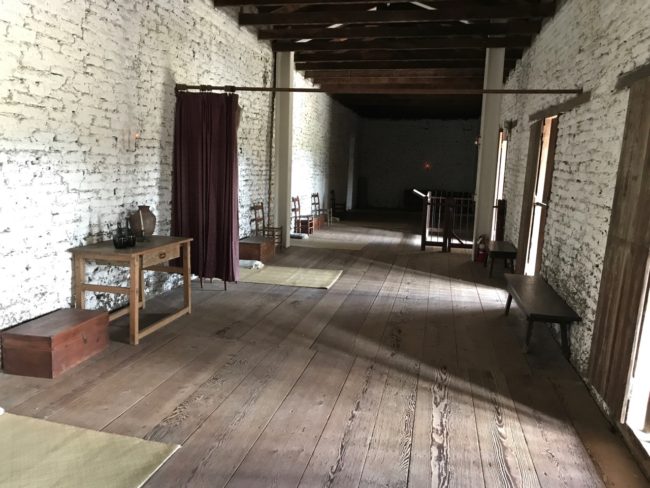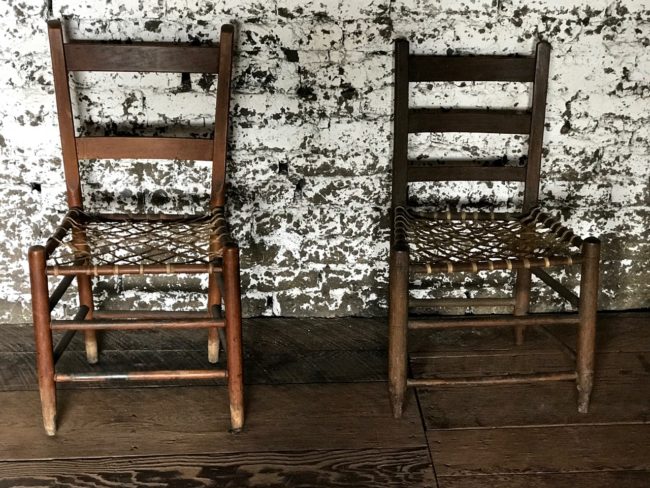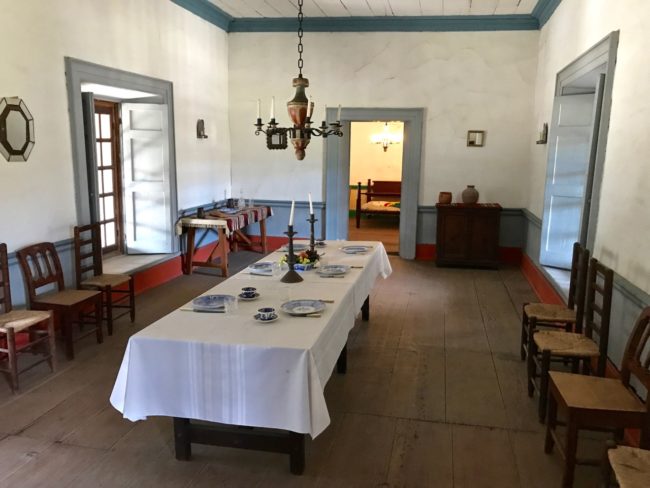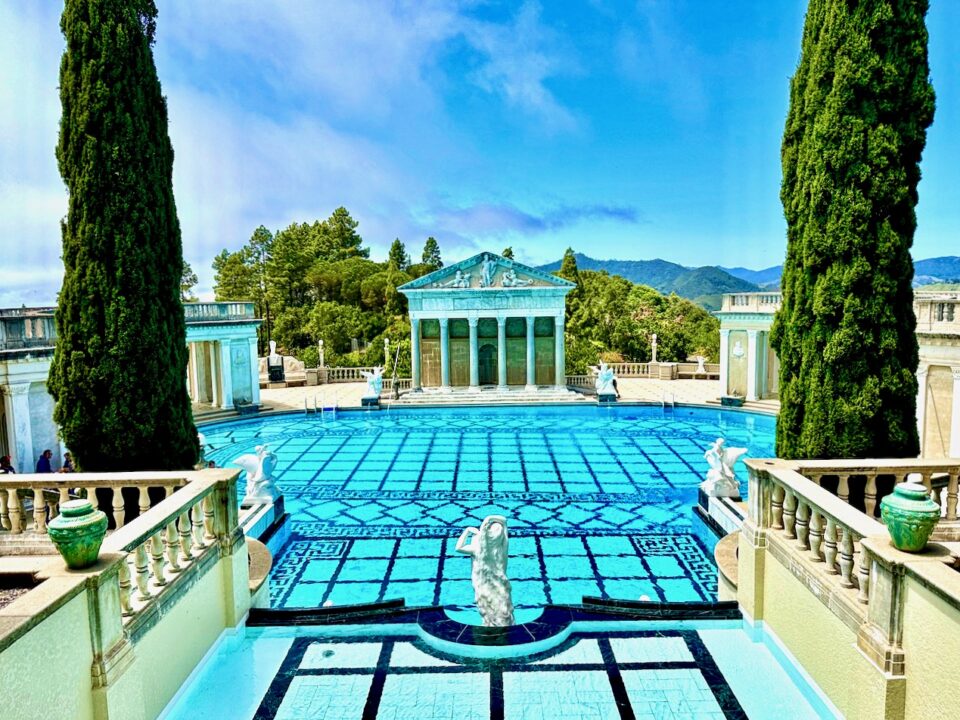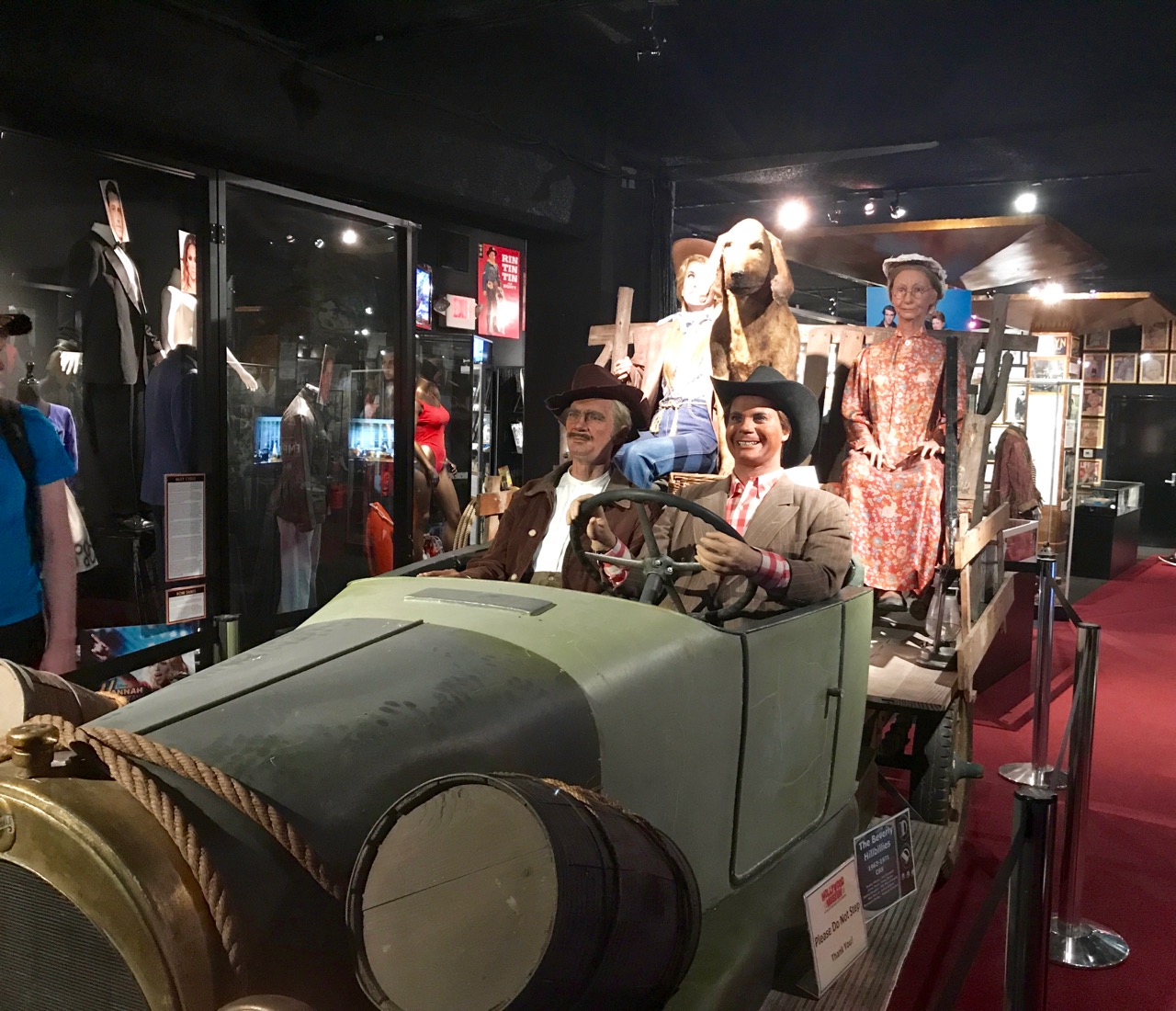
Hollywood Museum – Hollywood
February 15, 2018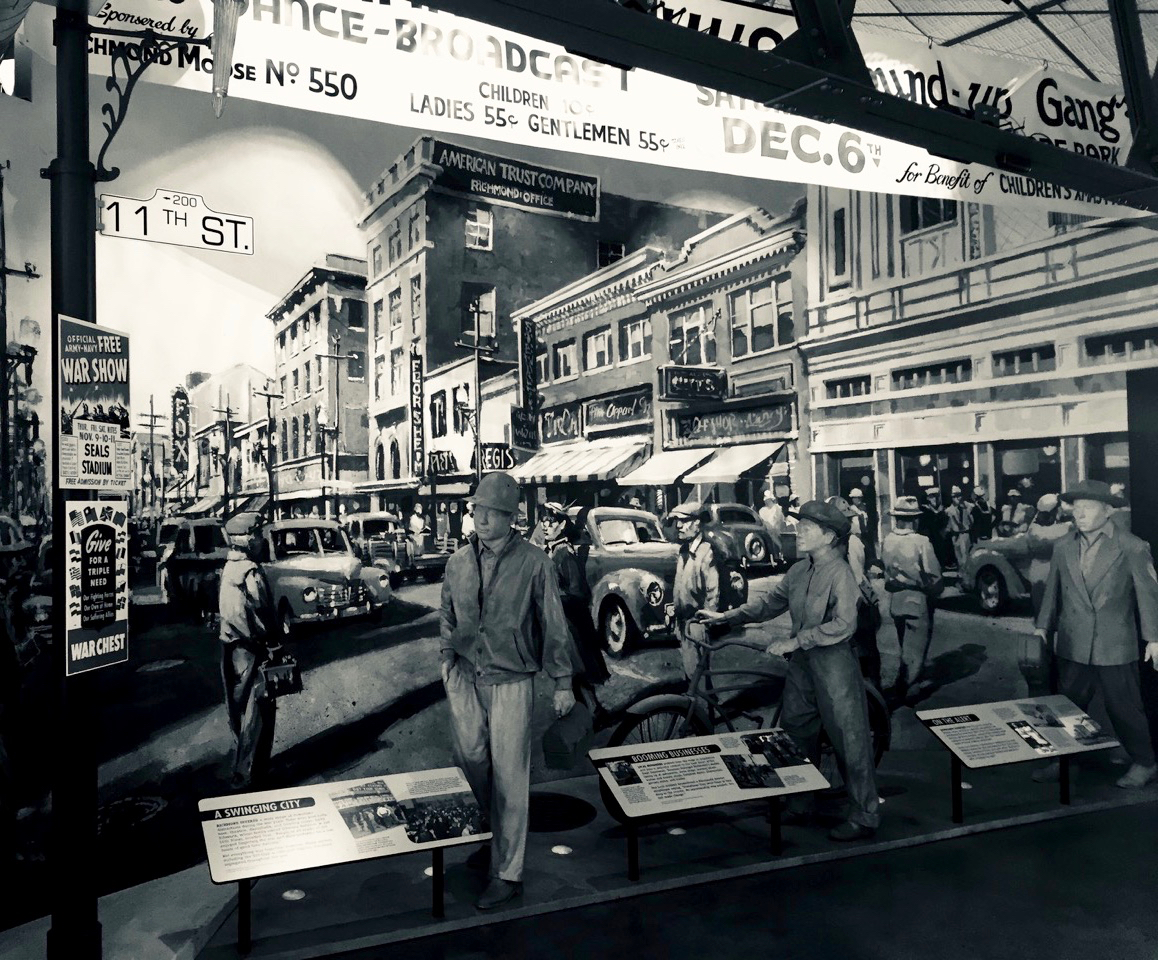
Rosie the Riveter/World War II Home Front National Historical Park
March 8, 2018Beware The Pear!
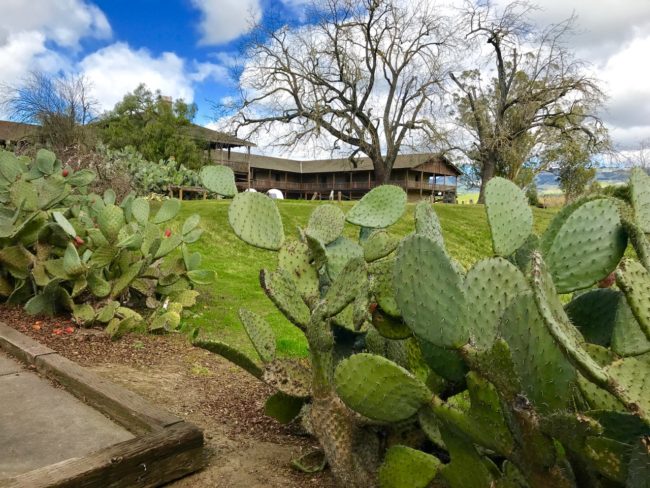 Petaluma Adobe State Historic Park/Vallejo’s Petaluma Adobe – Petaluma
Petaluma Adobe State Historic Park/Vallejo’s Petaluma Adobe – Petaluma
Like so many visits to our friends Kim and Mary in Bodega Bay, the four of us used the weekend to hike along the beautiful Sonoma Coast …
… (some had a harder time negotiating those large steps … aka me) …
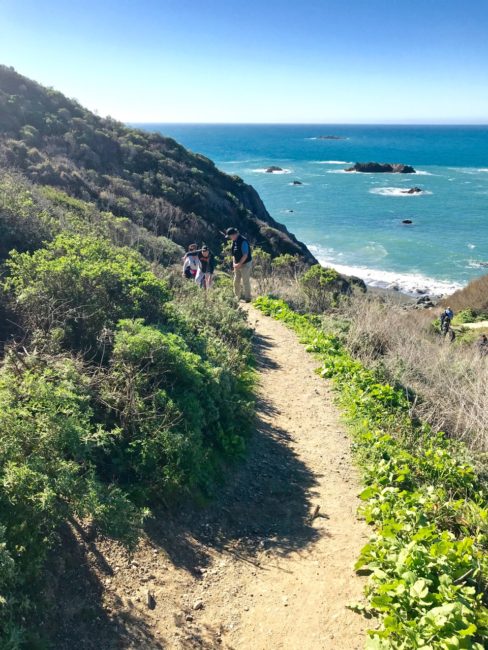 … participate in wine tasting (and purchasing) our favorite wine at our favorite tasting room … Ramazzotti in Geyserville …
… participate in wine tasting (and purchasing) our favorite wine at our favorite tasting room … Ramazzotti in Geyserville …
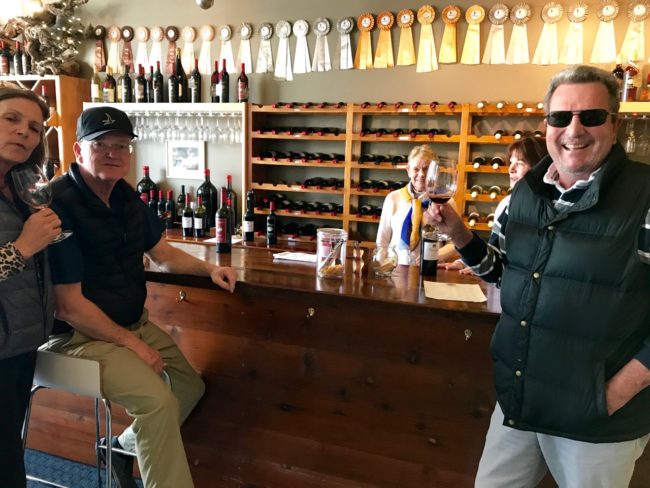 … and enjoy the gorgeous vineyards surrounding nearby Pedroncelli Winery, where we also picked up a little vino.
… and enjoy the gorgeous vineyards surrounding nearby Pedroncelli Winery, where we also picked up a little vino.
But we are also connoisseurs of history (ok, this building was on the way to wine tasting), so on a beautiful Sunday morning we paid a visit to the Petaluma Adobe State Historic Park. Vallejo’s Petaluma Adobe is the largest domestic adobe building remaining in the United States. It was constructed from 1836-1846 by General Mariano G. Vallejo, commandant of the Sonoma pueblo, as well as the founder of the towns of Santa Rosa and Petaluma. And yes, the city of Vallejo is named after him.
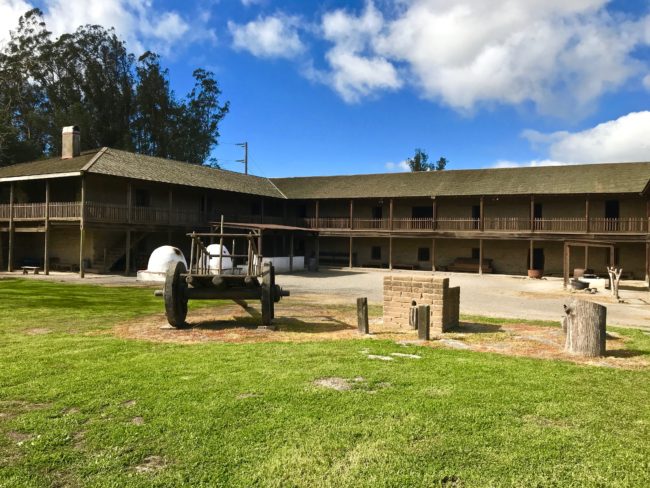 General Vallejo had been sent by the Mexican government to settle the area while keeping a close eye on the Russian outpost over at Fort Ross (no hacking was suspected, however). During construction, the Adobe served as the center of a 66,000-acre (100 square miles) working ranch, which Vallejo visited from his home in Sonoma (we visited there about five years ago … a couple pictures below).
General Vallejo had been sent by the Mexican government to settle the area while keeping a close eye on the Russian outpost over at Fort Ross (no hacking was suspected, however). During construction, the Adobe served as the center of a 66,000-acre (100 square miles) working ranch, which Vallejo visited from his home in Sonoma (we visited there about five years ago … a couple pictures below).
According to the website, “The structure was not completed when Vallejo was taken captive during the Bear Flag Revolt in 1846. By the time Vallejo was released months later, the Gold Rush had driven labor prices up and squatters had taken over portions of the land.”
From a National Park service website, “By the time the political dust settled, the ranch had been stripped of its valuables and most of the farm workers had fled. The U.S. Government recognized Vallejo’s legal title to the rancho. He decided to lease the property and eventually sold it in 1857.”
It was preserved by various organizations until the state of California purchased it in 1951, making it the largest privately owned Adobe building in California. We arrived shortly after 10 a.m., and, as you can see, we had no trouble finding a parking space.
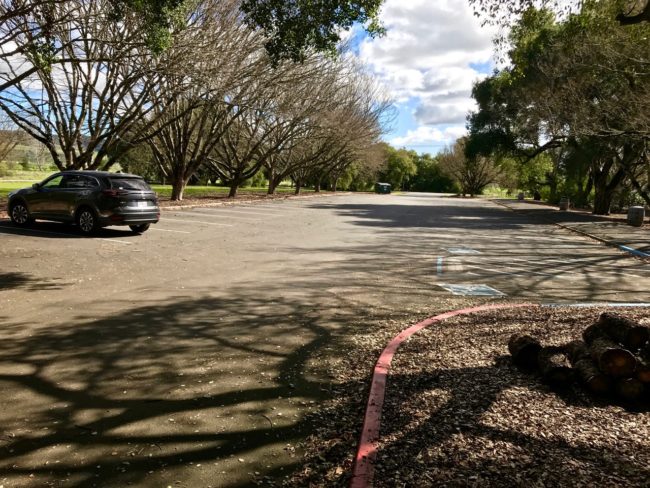 We passed by a bust of the general …
We passed by a bust of the general …
… and ventured over to a serene spot on a bridge overlooking a stream.
Quickly however, we found ourselves in a prickly situation.
That’s because the perimeter of the Adobe is surrounded by a beautiful row of Prickly Pear Cactus. Trust me, no one was going to sneak into this place.
Prickly Pear Cactus was used in Hispanic culture for the fruits (tunas) and the pads (nopalitos). It also served a purpose as a living fence. This was before the advent of barbwire.
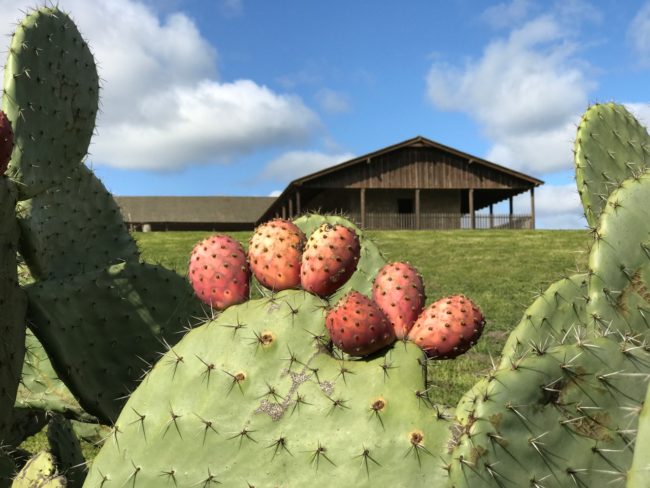 Walking into the Adobe I fancied myself as a Vaquero as I plopped down on this saddle in a room containing exhibits.
Walking into the Adobe I fancied myself as a Vaquero as I plopped down on this saddle in a room containing exhibits.
Finding the ranger in a room off the courtyard, we paid our three bucks apiece, and we were off to check out the historic building and grounds. As we surmised by the parking situation, we were the only four on the premises (besides the ranger), although the ranger told us that during the week the adobe is a popular destination for school field trips.
Back in the days of General Vallejo, the courtyard was quite a busy place.
Cooking was done on these hornos (Spanish beehive ovens).
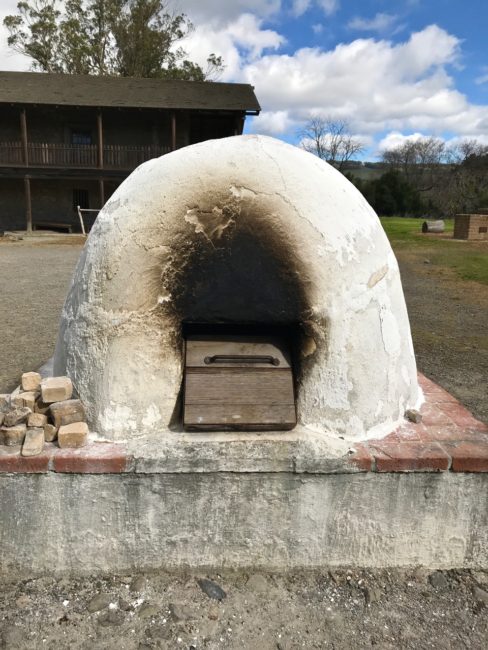 Candle making, tallow rendering and dying wool also took place in the courtyard.
Candle making, tallow rendering and dying wool also took place in the courtyard.
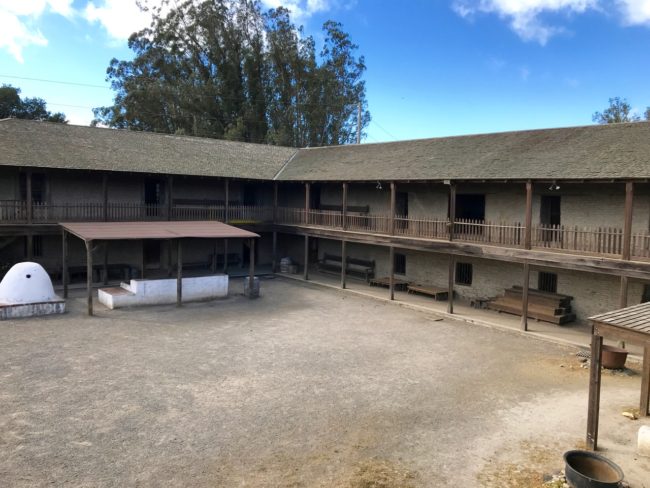 We weaved our way into The Weaving Room and Pantry. Women who worked at the Adobe were in charge of cooking and other domestic chores. More than 3,000 sheep were raised on the ranch, with their wool utilized as clothing, blankets and carpeting. People living here had only a few outfits, because it took quite a long time to weave the fabric.
We weaved our way into The Weaving Room and Pantry. Women who worked at the Adobe were in charge of cooking and other domestic chores. More than 3,000 sheep were raised on the ranch, with their wool utilized as clothing, blankets and carpeting. People living here had only a few outfits, because it took quite a long time to weave the fabric.
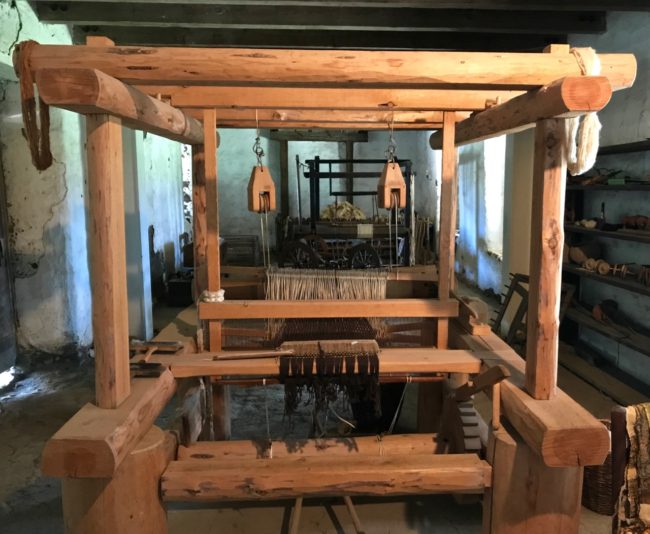 Our next stop was the Store, Workroom and Granary, which is where sacks of corn, barley and wheat were stored. The large stone wheel with a wooden handle (piedra de amolar … or grindstone) ground the grain. There were also workrooms for blacksmiths and carpenters, who would always be Close To You.
Our next stop was the Store, Workroom and Granary, which is where sacks of corn, barley and wheat were stored. The large stone wheel with a wooden handle (piedra de amolar … or grindstone) ground the grain. There were also workrooms for blacksmiths and carpenters, who would always be Close To You.
In the following room, you couldn’t run, but you could hides. Inside the Hides Storeroom and Leather Working Room, the tallow from the fat of the cattle was used to make everything from candles to explosives to soap. The literature stated that so many cattle were slaughtered annually for their hides (the primary economic activity of the rancho), there was not a place to keep all that meat fresh. Cattle carcasses would often be left in the fields to rot.
The Petaluma Adobe sold its wares to merchant ships arriving off the California coast.
Before heading upstairs, we wandered out a bit to look back at the Adobe. Following orders, I didn’t climb aboard the cart.
The first room upstairs, The Married Servants’ Quarters, served as the room for those with “higher status,” and the curtains gave them a semblance of privacy. In the Single Servant’s and Artisans’ Quarters, there were no beds … they slept on straw mats.
As we walked the upstairs hallway along the back, the view complete with cool cloud formations made for quite a sight.
Just like a Queen Bohemian Rhapsody, we would next do the Fandango, a room also used for sleeping. However, when the bed mats were rolled up this room would also be a place of music and dance, complete with musicians and food being brought in, so I guess the pieces on the right are musical chairs.
Next to it is the Mayordome’s Room. Not an enclosed stadium where mayors play sports, the Mayordome was actually the supervisor of the rancho. Since Vallejo was often away, he needed a responsible person to take charge. The room was large and included this comfy looking bed (if you’re short).
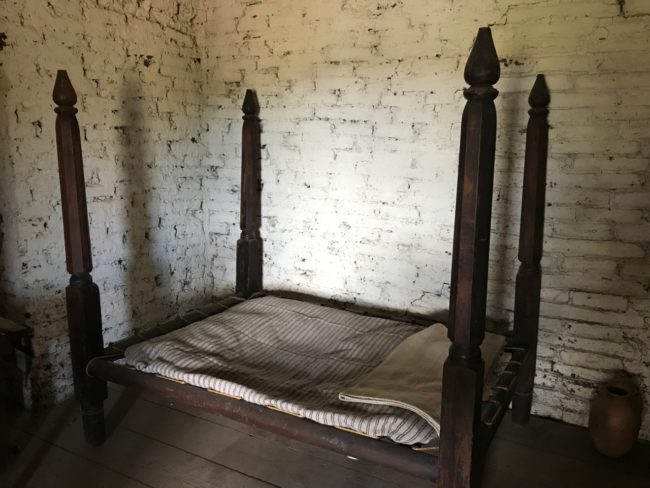 We headed to the Dining Room and Parlor (Sala). This is where the Vallejo family welcomed their guests. Mirrors reflected candle light. Vallejo would often read a book by the fireplace.
We headed to the Dining Room and Parlor (Sala). This is where the Vallejo family welcomed their guests. Mirrors reflected candle light. Vallejo would often read a book by the fireplace.
Finally, we were in the last room on our self-guided tour, the Vallejo Family Bedroom (I hope they all got along). The room is very similar to the Married Servants Quarters, but this room contains mirrors and paintings on the walls to demonstrate the difference in social standing.
 Our tour around the Adobe was completed in about half an hour.
Our tour around the Adobe was completed in about half an hour.
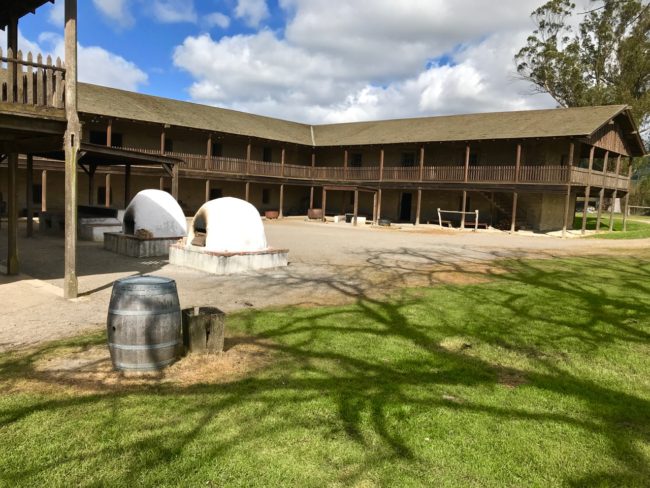 Your $3 ticket also gains you admittance to Sonoma State Historic Park, which includes the Barracks, Mission San Francisco Solano and the General Vallejo Home in Sonoma (photo of Vallejo’s home from 2013 trip we took). You can see my Sonoma report (including the Barracks), and my report on the Mission San Francisco Solano from a few years back. I also have a write-up of a previous visit to Fort Ross.
Your $3 ticket also gains you admittance to Sonoma State Historic Park, which includes the Barracks, Mission San Francisco Solano and the General Vallejo Home in Sonoma (photo of Vallejo’s home from 2013 trip we took). You can see my Sonoma report (including the Barracks), and my report on the Mission San Francisco Solano from a few years back. I also have a write-up of a previous visit to Fort Ross.
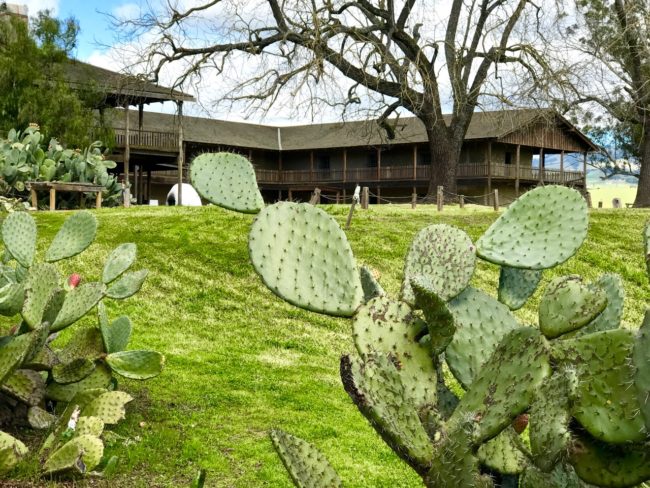 Vallejo’s Adobe was a nice diversion for about 45 minutes. I wouldn’t necessarily go too far out of my way to visit, but if you want to slow down and smell the prickly pears, this is your spot … but be careful and don’t slip. That could be painful.
Vallejo’s Adobe was a nice diversion for about 45 minutes. I wouldn’t necessarily go too far out of my way to visit, but if you want to slow down and smell the prickly pears, this is your spot … but be careful and don’t slip. That could be painful.
Petaluma Adobe State Park
325 Adobe Road
Petaluma, CA 94954
Phone: 707.762.4871
Tickets: $3
Parking: Free
www.petalumaadobe.com

